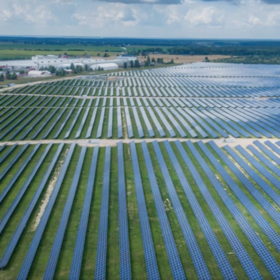pv magazine: Do you think the existing market is big enough to invest in battery storage manufacturing in India?
Ketan Chitnis: From the series of latest announcements from the power ministry, it’s evident that the Government has realized the significance of energy storage for the growth of the nation. The production-linked incentives (PLI) scheme takes care of the global competitiveness till we attain consumptions that can be competitive for manufacturing.
The Minister of Power has announced the requirement of 4 GWh grid-scale storage across India. This is followed by the requirement estimation of 23 GWh in Leh and Ladakh, and 18 GWh in Rajasthan for renewable integration.
We can see the echoes of the same from various agencies like Solar Energy Corporation of India (SECI), NTPC, Energy Efficiency Services Limited (EESL) on immediate Expression of Interest (EOI) and RFQs. So we are bullish on these initiatives.
The decision to invest in manufacturing is not guided by any particular segment but the overall demand side. There are a lot of other segments apart from grid-scale storage like telecom, microgrids, UPS, DG offset, and small energy storage systems that are showing a significant demand. So, there would be viability for setting up a big manufacturing capacity in the near future.
The government has launched the Production-linked Incentive (PLI) Scheme for advanced chemistry cell gigafabs. Between stationary energy storage and electric vehicle batteries, which application is more appealing for investment?
The recent announcement by the center on the much-awaited PLI scheme for the manufacturing of advanced chemistry cells (ACC) is a welcome move that will provide the necessary impetus to players in the sector.
With a budgetary outlay of INR 18,100 crore, the PLI scheme will help in setting up giga-scale factories, promoting exports, achieving economies of scale, and producing cutting-edge high-quality globally competitive products. Most importantly, it will help to create the next wave of job growth in the energy sector.
Additionally, as per the surveys this year, the market for stationary energy storage is higher than electric vehicles. Today, India is at a crucial stage in its transformative journey towards creating an e-mobility ecosystem, a stationary energy storage market, and a better renewable integration system.
Establishing domestic manufacturing capabilities is essential for the cost reduction of the product. Better manufacturing capabilities will be an essential enabler towards accelerating the adoption of electric mobility in the country.
Being associated with a market leader in the sector and with the capability we possess to design, manufacture, operate, and maintain large-scale energy storage system projects, PLI tender is definitely something we’re interested in.
We have our sights set on participating in as many opportunities as possible to maintain our market leadership position. However, when it comes to decisions about which tenders to participate in, it is always a strategic decision-making process and it depends on that particular tender, its economics, and the risk analysis involved.
Is the domestic ecosystem ripe enough to support the manufacturing of battery storage?
As we understand it, the ecosystem will develop in conjunction with consumption, and we are confident that the Indian manufacturing industry can become a part of the larger global battery energy storage market.
There is not much of a challenge as far as manufacturing is concerned although it’s going to require a sizeable effort from all stakeholders. It is just a matter of time until consumption sees an even greater uptick and the industry starts producing the components and materials that are essential for energy storage. We believe that it’s going to be a consumption-driven ecosystem.
Another bigger part of the puzzle is the supply chain competitiveness; with the introduction of the government’s PLI scheme, we are witnessing a sense of seriousness among stakeholders in enrolling for this. In a couple of years, India will have a significant cell manufacturing capacity to cater to a part of its demand.
There are a few components that would require an outrightly new ecosystem and we will have a dependency on the outside world at least for some time.
There are concerns about raw material availability for battery storage manufacturing. Given that, how can the production costs be lowered to compete with cheaper products?
In India, we already have an ecosystem that can adapt itself to the requirements of energy storage. The electronic sector’s manufacturing abilities are a good example of a successful manufacturing story.
As far as the components are concerned, industries are operating at very good standards in terms of maintaining the quality that is required for the level of precision at fully automated plants such as ours. So the ecosystem already exists and will start working for battery manufacturers.
As we start manufacturing cells in India, the scale is going to be very important. It is good that the government is supporting the introduction of PLI. Till the time our domestic industry scales, the PLI scheme is a major incentive that the government is offering to the industry in terms of matching the cost-effectiveness to tackle China.
Secondly, we also have the manpower available to us at a better cost than in China. And even in terms of other infrastructure, we are developing fast and will be able to match up to China’s economy of scale within the next few years.
Which battery storage technology makes the most sense for Indian utility-scale battery storage projects? The case for manufacturing these batteries in India?
The battery storage industry has been very dynamic over the last few years. However, there is hardly any technology apart from Li-ion which is ready for mass production. This is largely because the development of battery technologies leading to commercial production at scale takes fairly longer development cycles unlike any other electrical device or software that you can build, test, and then launch. It takes a reasonably long period for any chemical composition/chemical cells such as lithium-ion batteries to be tested and commercialized.
As for what technology makes the most sense for India, there are various applications, all with different technical requirements, and it cannot be any one particular technology that is going to serve the purpose.
However, currently, the only commercialized option which is ready to go and already moving into mass production is lithium-ion batteries. Therefore, for the time being, the energy storage ecosystem is going to be driven by lithium-ion batteries, until another technology can prove itself to be useful and viable for a specific application.
How do you see the Indian market evolve in the next three years, both in manufacturing and demand?
Investments in manufacturing are linked to the demand and the market sentiment. If you have a good demand prediction that is bolstered by real demand coming in and if the sentiments about growth prospects are high, then the manufacturing sector will automatically develop without any policy intervention or any active incentives.
Demand is thus the most crucial element. I think the government has taken care of this and intervened positively to help India excel at manufacturing.
On the demand side, various sectors are actively trying to adopt energy storage for the first time; grid-scale storage is the most important segment here because energy security is paramount to fulfilling the economic objectives of this country. Also, when it comes to renewable integration, there is a huge scope for demand. India is very near to completing its target of 175 Gigawatt of renewable deployment, but we hardly have any storage deployed here. This is one area that could benefit immensely from energy storage because renewable energy production is intermittent and dependent on forces of nature.
Also, there are a lot of other segments where energy storage is already used like residential energy storage, telecom applications, etc. All these applications are going to experience a technology shift because of the better economy, and the performance and reliability of technologies in energy storage. The energy storage market thus has a bright future ahead that will be fuelled by demand from a variety of sectors.
This content is protected by copyright and may not be reused. If you want to cooperate with us and would like to reuse some of our content, please contact: editors@pv-magazine.com.









3 comments
By submitting this form you agree to pv magazine using your data for the purposes of publishing your comment.
Your personal data will only be disclosed or otherwise transmitted to third parties for the purposes of spam filtering or if this is necessary for technical maintenance of the website. Any other transfer to third parties will not take place unless this is justified on the basis of applicable data protection regulations or if pv magazine is legally obliged to do so.
You may revoke this consent at any time with effect for the future, in which case your personal data will be deleted immediately. Otherwise, your data will be deleted if pv magazine has processed your request or the purpose of data storage is fulfilled.
Further information on data privacy can be found in our Data Protection Policy.